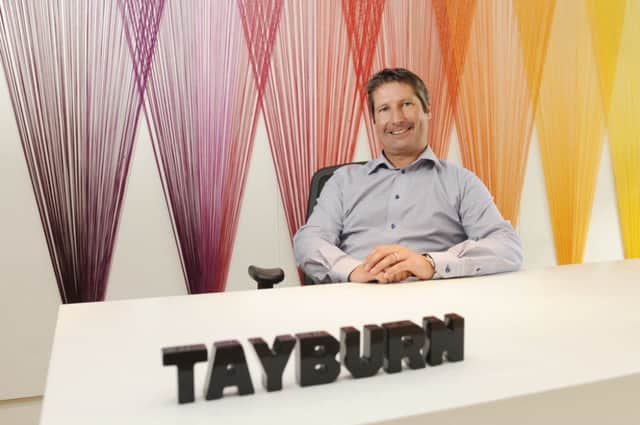Interview: Tayburn boss Simon Farrell


The figure is pleasing but does not surprise him, as there has been a noticeable pick-up in business recently. The latest survey from advertising and branding industry body the IPA has also just pointed to record growth in the sector across the first half of this year.
As confidence in the economy returns, firms are doing everything they can to make sure consumers choose their brands over their competitors’, and the IPA predicts that marketing budgets will grow at twice the pace of the UK economy this year.
Advertisement
Hide AdAdvertisement
Hide AdBut as companies move from survival to growth mode, their needs are changing, and Farrell is putting Tayburn through a manoeuvre as postmodern as a pop-art soup can design. He’s not just rebranding the brand agency, he’s redesigning its service so that it branches out into service design.
He says: “The last four or five projects we’ve been involved in have all been about reinventing an organisation to position it in a bigger way for the future. People want to be different and get out of survival mode.”
And a brand agency is no different, he adds. Tayburn, which employs more than 60 staff in Edinburgh, Manchester and Istanbul, expects to take on more staff in the coming years as the work it does broadens.
“Over the past year to 18 months, that confidence that our clients are getting has been reflected in the work we’re doing,” Farrell says. “It’s more strategic and holistic and less tactical. Before it was tactical because people needed to drive sales immediately.”
In fact, Farrell’s preferred system is for the two to work in tandem, so that each sales drive or advertising campaign is part of a longer-term brand building exercise as well.
Tayburn is now taking that approach further, branching into an emerging area of branding known as service design. This involves coaching staff in a client’s offices and call centres to answer the phone in a certain way, tailoring their customer-facing activities to fit the image the firm wants to project.
The firm is already offering the service to some of its clients and plans to “launch it on the world” once it has built up some case studies to illustrate the possibilities to new customers.
Farrell says the system is particularly suitable for financial services firms, and he hopes that the move into service design will finally allow Tayburn to make inroads in London, something he originally set out to do when he took the helm of the agency in 2005. The financial crisis and recession got in the way, especially as Royal Bank of Scotland was the firm’s biggest client in 2008. Farrell, brought in as managing director partly because of his experience of the English market, had to concentrate on maintaining the firm’s 100 per cent profitability record. Having achieved that – he even managed some profit growth – he is now relishing the challenge of reshaping the business.
Advertisement
Hide AdAdvertisement
Hide AdIt is the first time Farrell, and indeed the Tayburn board, have attempted such a change in direction. As one of Scottish Enterprise’s account managed businesses, the directors are getting strategic advice on the process. It has taken longer than Farrell and his colleagues had initially hoped – they have been planning the changes for a year now – but they are finally at a stage to start building the new section of the business.
“We have had a big internal cultural change,” says Farrell. “We have worked on the values and vision and now we are working on the capability.”
Although the agency works with large clients including Standard Life and Heineken, it expects the service design offering will be pitched initially at smaller firms of up to 2,000 employees. However, by working in partnership with companies that specialise in delivering such changes, or with internal teams within a larger company, Farrell hopes that Tayburn will eventually be able to deliver its services to relatively large firms.
Whatever the outcome of its transformation, the agency appears to be in a sector well placed for growth. The IPA’s latest bellwether report, published last week, said anecdotal evidence from marketing executives suggested that budgets were being revised higher at a time when the UK economic climate was strengthening. Although demand is strong, competition for business remained fierce and brand awareness was seen as key to take advantage of the improved sales environment.
With marketing budgets set to grow 6 per cent this year, Tayburn’s transformation cannot come soon enough, so that it can start transforming other businesses keen to embrace new markets.